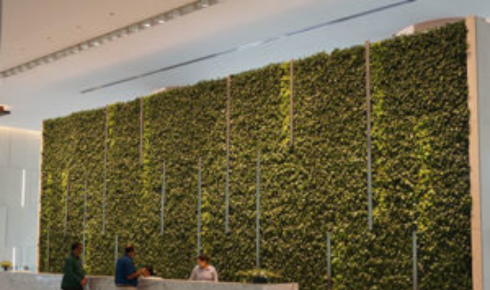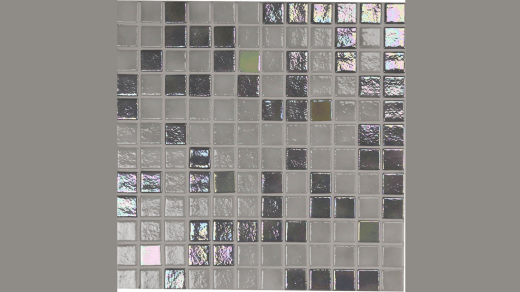Discover the transformative power of vertical garden installations in office spaces and explore the impressive return on investment that green walls offer. From boosting employee productivity to enhancing aesthetics and air quality, uncover the numerous benefits of incorporating living plant walls into your workplace environment.
Benefits of Vertical Gardens in Office Spaces
Vertical gardens in office spaces offer a multitude of benefits that contribute to creating a healthier and more productive work environment. Firstly, vertical gardens help improve air quality by acting as natural air filters, absorbing pollutants and releasing oxygen into the workspace. This can lead to a reduction in common office complaints such as headaches, fatigue, and respiratory issues. The presence of greenery also helps to regulate humidity levels, creating a more comfortable and pleasant atmosphere for employees. Additionally, the aesthetic appeal of vertical gardens can boost employee morale and creativity, as research has shown that exposure to nature and green spaces can have a positive impact on mental well-being and cognitive function.
Furthermore, vertical gardens can contribute to reducing stress and promoting overall well-being among office workers. The presence of greenery has been linked to lower levels of stress and anxiety, as plants have a calming effect on individuals and can help create a sense of tranquility in the workplace. Employees can also benefit from the biophilic design aspect of vertical gardens, which connects them with nature and fosters a sense of connection to the environment. This can lead to increased job satisfaction, higher productivity, and improved overall job performance. Ultimately, incorporating vertical gardens in office spaces can enhance the overall work experience for employees and contribute to a more sustainable and healthy work environment.
Tropical Plant Rentals offers innovative solutions that transform office spaces into lush, green havens. With over 45 years of experience, they provide vertical gardens that not only beautify but also promote employee well-being, ensuring a healthier, more productive, and inviting work environment.
Design Considerations for Vertical Garden Installations
Designing vertical gardens requires careful consideration of several factors to ensure successful installation and maintenance. One essential consideration is the selection of appropriate plants that are well-suited to vertical growth conditions. Plants with shallow roots, such as ferns, succulents, and mosses, are ideal for vertical gardens as they are lightweight and can thrive in limited soil depths. Additionally, choosing plants that have similar light and water requirements will help maintain a harmonious and healthy ecosystem within the vertical garden. It is also crucial to consider the orientation of the vertical garden installation to ensure that the plants receive adequate sunlight throughout the day. South-facing walls typically receive the most sunlight, making them ideal for sun-loving plants, while north-facing walls may be better suited for shade-tolerant species.
Another important design consideration for vertical garden installations is the selection of a suitable irrigation system. Vertical gardens require efficient watering systems to ensure that all plants receive an adequate amount of moisture without causing waterlogging or dry patches. Drip irrigation systems are commonly used in vertical gardens as they deliver water directly to the roots of the plants, minimizing waste and reducing the risk of overwatering. It is also essential to consider the water source and drainage system to prevent water leakage and potential damage to the building structure. Incorporating a reservoir or recirculating system can help conserve water and reduce the maintenance requirements of the vertical garden. Overall, careful planning and consideration of these design factors are essential for creating a thriving and sustainable vertical garden installation.
Environmental Impact of Green Walls in Offices
Green walls, also known as living walls or vertical gardens, have gained popularity in office spaces due to their aesthetic appeal and numerous environmental benefits. One of the key environmental impacts of green walls in offices is their ability to improve indoor air quality. These walls act as natural air filters, removing toxins and pollutants from the air, which can significantly reduce the presence of harmful chemicals in the workspace. Additionally, green walls contribute to the reduction of the urban heat island effect by absorbing heat and providing natural cooling through transpiration. This can lead to a decrease in the energy consumption of buildings, as less energy is needed for air conditioning and cooling systems. Furthermore, green walls can help mitigate noise pollution in offices by absorbing sound vibrations and creating a more peaceful and productive work environment.
Another important environmental impact of green walls in offices is their role in promoting biodiversity and habitat creation in urban areas. By incorporating a variety of plant species in the vertical garden, green walls provide food and shelter for insects, birds, and other wildlife, helping to support local ecosystems. This can contribute to the preservation of biodiversity in urban environments, which are often characterized by a lack of green spaces. Additionally, green walls can help reduce stormwater runoff by absorbing and filtering rainwater, which can help prevent flooding and erosion. By reducing the strain on municipal stormwater systems, green walls play a role in sustainable water management practices in urban areas.
Cost Analysis of Implementing Vertical Gardens
Implementing vertical gardens involves various costs that need to be carefully analyzed. The initial cost of setting up vertical gardens includes expenses such as purchasing the necessary materials like vertical garden structures, irrigation systems, soil, plants, and tools. Labor costs for installation and maintenance also need to be considered. Additionally, there are ongoing costs associated with maintaining vertical gardens, such as water and electricity for the irrigation system, fertilizers, pest control measures, and regular pruning and trimming of plants. These costs can vary depending on the size of the vertical garden, the types of plants chosen, and the complexity of the irrigation system.
However, it is important to consider the potential cost savings and benefits of implementing vertical gardens. Vertical gardens can help reduce energy costs by providing insulation to buildings, thereby reducing the need for heating and cooling. They can also improve air quality, reduce noise pollution, and increase property value. In a commercial setting, vertical gardens can enhance the aesthetic appeal of the space, attracting more customers and potentially increasing revenue. Additionally, vertical gardens can contribute to a more sustainable environment by reducing urban heat island effects and promoting biodiversity. When conducting a cost analysis of implementing vertical gardens, it is crucial to weigh these benefits against the initial and ongoing costs to determine the overall financial feasibility and long-term value of the project.
Vertical garden installations for offices can transform workspaces by enhancing aesthetics and promoting employee well-being. Companies like Tropical Plant Rentals, with decades of experience, offer tailored solutions that improve air quality and create a welcoming environment, positively affecting productivity and overall workplace satisfaction.
Employee Wellbeing and Productivity in Green Office Environments
Employee wellbeing and productivity are closely linked to the physical environment in which they work, and green office environments have been shown to have a positive impact on both. Green office spaces, characterized by features like natural light, indoor plants, and sustainable materials, have been found to reduce stress levels, increase concentration, and enhance overall wellbeing among employees. Studies have indicated that exposure to natural elements such as sunlight and greenery can improve mood, creativity, and cognitive function, leading to higher productivity levels and job satisfaction. Additionally, green office environments often promote better air quality, which can contribute to reduced absenteeism and fewer health issues among employees, further enhancing overall wellbeing and productivity in the workplace.
Incorporating sustainable practices into office design and operations not only benefits the environment but also has a positive ripple effect on employee wellbeing and productivity. Features such as energy-efficient lighting, proper waste management, and eco-friendly materials not only reduce the carbon footprint of the office but also create a healthier and more inspiring work environment for employees. Employees are more likely to feel engaged and motivated when they work in a space that aligns with their values and supports their health and wellbeing. By prioritizing green office initiatives, organizations can not only attract and retain top talent but also create a workspace that fosters creativity, collaboration, and overall productivity among employees.
Maintenance and Upkeep of Vertical Garden Installations
Maintenance and upkeep of vertical garden installations are crucial to ensure the health and longevity of the plants. Regular watering is essential to keep the plants hydrated, especially during hot and dry periods. Proper drainage is also important to prevent waterlogging, which can lead to root rot and other issues. Monitoring the moisture levels in the soil and adjusting the watering schedule accordingly is key to maintaining a healthy vertical garden. Additionally, fertilizing the plants regularly with a suitable plant food will provide essential nutrients for growth and flowering.
Pruning and trimming are necessary tasks to keep the vertical garden looking neat and tidy. Removing dead or yellowing leaves, as well as cutting back overgrown branches, will help promote new growth and prevent overcrowding. Regularly inspecting the plants for pests and diseases is also important, as early detection and treatment can help prevent widespread damage. Lastly, cleaning the vertical garden structure itself, such as removing dust and debris, will not only improve the aesthetic appeal but also ensure proper airflow and light penetration for the plants. By following a consistent maintenance routine, vertical garden installations can thrive and provide a beautiful green space for years to come.
Case Studies: Successful Green Wall Projects in Office Settings
Green walls, also known as living walls, have gained popularity in recent years due to their aesthetic appeal and numerous environmental benefits. Several successful green wall projects in office settings serve as excellent case studies to showcase their effectiveness. One such project is the Etsy headquarters in Brooklyn, New York, where a lush green wall spanning three stories was installed in the atrium. This green wall not only enhances the visual appeal of the office space but also improves indoor air quality and provides a calming effect on employees, boosting their productivity and well-being. The successful integration of the green wall into the office setting at Etsy serves as a prime example of how such projects can transform work environments into healthier and more sustainable spaces.
Another notable case study is the PNC Tower in Pittsburgh, Pennsylvania, which features a stunning green wall covering one entire side of the building. This ambitious project not only adds a touch of nature to the urban landscape but also helps reduce the building’s energy consumption by providing natural insulation and shade. By incorporating a green wall into their office setting, PNC demonstrates a commitment to sustainability and environmental responsibility, setting a positive example for other businesses to follow. The success of the green wall project at the PNC Tower highlights the potential for incorporating biophilic design elements in office environments to create healthier, greener, and more inspiring spaces for employees.
Integrating Biophilic Design with Vertical Gardens
Integrating biophilic design with vertical gardens is a powerful way to enhance the connection between humans and nature in urban environments. Vertical gardens, also known as living walls, offer a unique opportunity to incorporate greenery into vertical spaces, adding a sense of tranquility and vitality to often sterile urban landscapes. By combining vertical gardens with biophilic design principles, such as incorporating natural materials, maximizing natural light, and creating opportunities for interaction with nature, designers can create spaces that not only look beautiful but also promote well-being and productivity.
Vertical gardens integrated with biophilic design can have numerous benefits beyond aesthetics. They can help improve air quality, reduce noise pollution, regulate indoor temperature, and even provide food in urban settings. By bringing nature closer to people in the form of vertical gardens, individuals can experience the restorative effects of nature even in dense urban areas. This integration can also foster a greater appreciation for the natural world and encourage sustainable practices, as people become more connected to the environment around them. In essence, integrating biophilic design with vertical gardens is a holistic approach to creating healthier, more vibrant urban spaces that prioritize the well-being of both people and the planet.
ROI Metrics for Measuring the Success of Green Walls
ROI metrics are crucial for evaluating the success of green walls, which are becoming increasingly popular in urban environments. One key metric is the reduction in energy costs associated with green walls. Green walls can provide insulation, reducing the need for heating and cooling in buildings. By tracking the decrease in energy consumption, businesses can calculate the ROI of installing green walls. Another important metric is the improvement in air quality. Green walls can help filter out pollutants and improve indoor air quality, leading to potential health benefits for building occupants. Monitoring the reduction in employee sick days or improvements in productivity can provide a tangible ROI for green walls.
In addition to energy savings and improved air quality, another ROI metric for green walls is the enhancement of the building’s aesthetics and overall property value. Green walls can add a touch of nature and beauty to otherwise dull and mundane structures, increasing the attractiveness of the property. This aesthetic improvement can translate into increased foot traffic, customer engagement, and ultimately higher revenue for businesses. Tracking metrics such as increased customer retention, higher property rental or resale value, and positive feedback from visitors can help quantify the ROI of green walls in terms of their impact on the overall appearance and value of a building or space.
Future Trends in Office Greenery: Innovations in Vertical Garden Technology
Vertical gardens are quickly becoming a popular trend in office greenery, offering a space-saving solution for incorporating plants into indoor environments. Innovations in vertical garden technology are revolutionizing the way greenery is integrated into office spaces. One of the future trends in this field is the development of modular and customizable vertical garden systems that can be easily installed and adapted to fit different office layouts. These systems allow for a variety of plant species to be grown vertically, creating a lush and vibrant workspace that promotes productivity and well-being among employees. Additionally, advancements in irrigation systems and lighting technology for vertical gardens are enhancing plant growth and sustainability, making it easier for companies to maintain their green spaces with minimal effort.
Another exciting trend in the future of office greenery is the integration of smart technology into vertical garden systems. This includes the use of sensors and automation to monitor plant health, adjust lighting and watering schedules, and provide real-time data on the environmental conditions within the office space. By incorporating smart technology, companies can ensure that their vertical gardens thrive and remain healthy, creating a visually stunning and sustainable work environment. Furthermore, the use of green walls in office spaces can also help improve indoor air quality, reduce noise levels, and enhance the overall aesthetic appeal of the workspace. With these innovative advancements in vertical garden technology, the future of office greenery is sure to be both functional and visually captivating.


